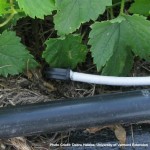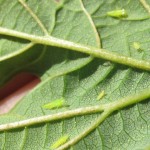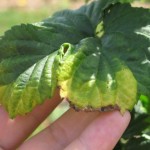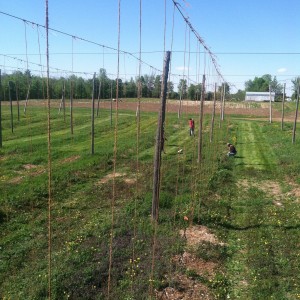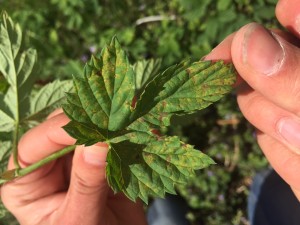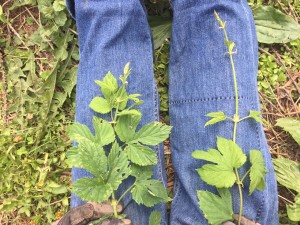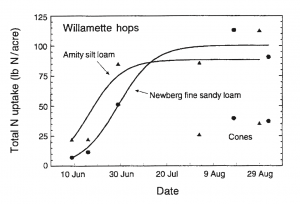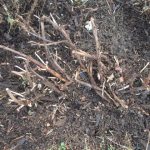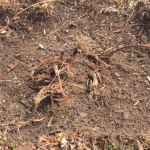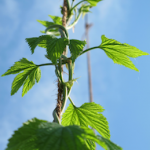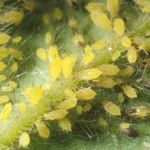
“There are three things that matter in property: location, location, location.” We have found that location also matters in growing hops, particularly this spring. Southern Vermont has been exceptionally dry for long periods, while northern parts of our region have been soggy, to say the least.
The cool, wet conditions that we’ve been experiencing in the north typically favor hop aphids, however, we haven’t been seeing many aphids in Vermont hopyards this season. Perhaps they have been slow to move from their alternate host, woody plants in the genus Prunus (cherries, other stone fruits, etc.). Unfortunately, these conditions are quite favorable for downy mildew, so diligent downy mildew management has been a must.
Meanwhile, the relative warmth in southern portions of our region, combined with the early arrival of potato leafhoppers this year, means we are starting to see second generation leafhopper nymphs scuttling across the undersides of hop leaves. This also helps explain the early appearance of two-spotted spider mites as well as spider mite destroyers, their arch nemesis (and our friend). The aptly named spider mite destroyers (ladybugs that specialize on spider mites) can be very helpful when managing spider mites as the season progresses.
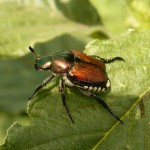
The old saying “knee-high by the 4th of July” may be more commonly used when talking about corn, but be on the lookout for our most patriotic of pests: Japanese beetles. Come July 4th, some of us begin to feel like we are knee-high in Japanese beetles.
Just remember, keep calm and hop on…
